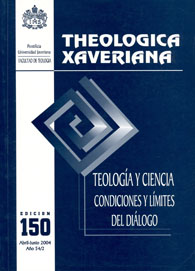Abstract
Este ensayo es una invitación para hacer un viaje en siete etapas, las cuales recogen caminos recorridos por individuos o grupos descubriendo un método. Se tienen presentes cinco casos individuales: un tintorero japonés, Arquímedes de Siracusa, un niño matemático, un lector que construye una tabla de adiciones a partir del número uno, y el notable comienzo de la carrera de Helen Keller; dos ejemplos de búsquedas colectivas cierran la exploración de estos caminos: la formación del Método Escolástico Medieval y la formación de la moderna Escuela Humanista. La última sección provee una reflexión conclusiva y una introducción a la inteligibilidad del método, la cual examina a través de una entrevista, cuestiones referentes a los métodos, su génesis, y en particular, en relación con el método en teología. En este ensayo juegan un papel importante, algunas breves referencias al pensamiento del maestro canadiense del pensamiento, Bernard J.F. Lonergan, S.J.This journal is registered under a Creative Commons Attribution 4.0 International Public License. Thus, this work may be reproduced, distributed, and publicly shared in digital format, as long as the names of the authors and Pontificia Universidad Javeriana are acknowledged. Others are allowed to quote, adapt, transform, auto-archive, republish, and create based on this material, for any purpose (even commercial ones), provided the authorship is duly acknowledged, a link to the original work is provided, and it is specified if changes have been made. Pontificia Universidad Javeriana does not hold the rights of published works and the authors are solely responsible for the contents of their works; they keep the moral, intellectual, privacy, and publicity rights.
Approving the intervention of the work (review, copy-editing, translation, layout) and the following outreach, are granted through an use license and not through an assignment of rights. This means the journal and Pontificia Universidad Javeriana cannot be held responsible for any ethical malpractice by the authors. As a consequence of the protection granted by the use license, the journal is not required to publish recantations or modify information already published, unless the errata stems from the editorial management process. Publishing contents in this journal does not generate royalties for contributors.


